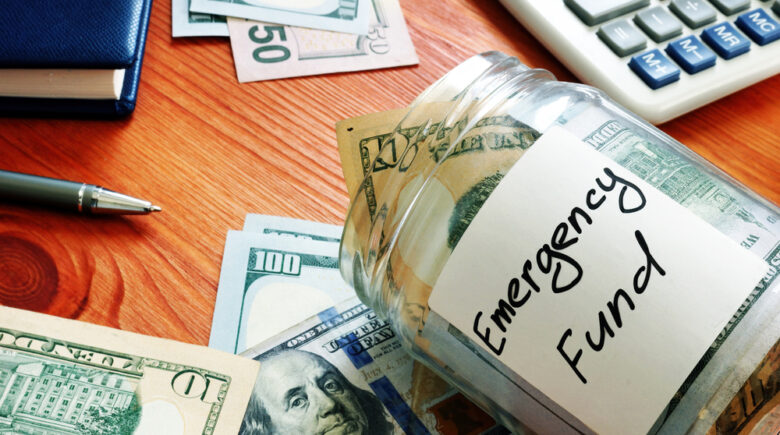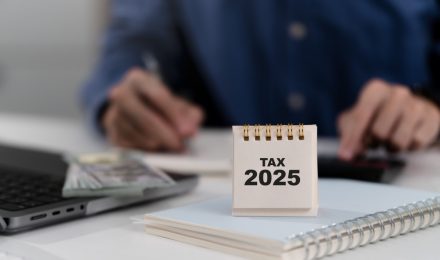Table of Contents
- Understanding the Purpose and Scope of Emergency Savings
- How Much Emergency Savings Is Enough?
- Building Your Emergency Fund Strategically
- Where to Keep Your Emergency Fund
- Common Mistakes to Avoid
- The Psychological and Practical Benefits
- When to Use Your Emergency Fund—and When Not To
- Integrating Emergency Savings Into Broader Financial Planning
- Final Thoughts
- References
In a world marked by economic unpredictability and personal financial risk, establishing a robust emergency savings fund is a foundational pillar of financial well-being. Whether faced with sudden job loss, medical emergencies, or unexpected home repairs, having accessible cash reserves can mean the difference between resilience and financial devastation. This article explores in depth how much you should ideally save, how to build that fund strategically, and why doing so is an essential act of financial self-defense.
Understanding the Purpose and Scope of Emergency Savings
Emergency savings are not a luxury—they are a necessity. Unlike long-term savings or investment accounts, this fund serves a singular purpose: to cover unanticipated and urgent expenses without resorting to high-interest debt. The fund must be liquid, secure, and readily accessible. Typically, it resides in a high-yield savings account or a money market account that offers both stability and modest interest growth.
How Much Emergency Savings Is Enough?
The ideal amount for an emergency fund varies based on individual circumstances, including income stability, household size, and monthly expenses. However, financial institutions and planning authorities generally recommend a baseline:
- Minimum Requirement: At least three months’ worth of essential living expenses.
- Optimal Cushion: Six to twelve months of expenses for those with variable income, such as freelancers or small business owners.
To determine your target figure, begin by calculating your essential monthly expenses—housing, utilities, groceries, transportation, insurance, and minimum debt payments. Multiply that number by the number of months you want to safeguard. For example, if your essential expenses total $3,000 per month, a six-month fund would require $18,000.
Households with dual incomes and secure jobs may lean toward the lower end of the range. In contrast, those with dependents or employment in volatile industries should aim higher. According to a 2024 report by the Federal Reserve, nearly 37% of U.S. adults would struggle to cover a $400 emergency expense without borrowing or selling assets—a stark reminder of the importance of preparation (Federal Reserve, 2024).
Building Your Emergency Fund Strategically
Constructing a well-padded emergency fund is a process, not an overnight achievement. It requires intentionality, consistency, and a structured approach.
1. Set a Realistic Initial Goal
If saving six months of expenses feels daunting, start with a smaller, attainable milestone—$1,000 is a common recommendation. This seed fund provides immediate protection against minor disruptions like car repairs or medical co-pays.
2. Automate Your Savings
Automation removes emotion and inertia from the equation. Set up a direct deposit from your paycheck or automatic monthly transfer from your checking to your dedicated emergency account. Even modest contributions—$100 to $200 monthly—accumulate meaningfully over time.
3. Reallocate Windfalls and Refunds
Tax refunds, bonuses, cash gifts, and stimulus checks are excellent opportunities to accelerate your emergency savings. Because these funds are outside your regular income, directing them toward savings feels less burdensome and can offer a significant boost.
4. Cut and Redirect Expenses
Analyze your discretionary spending. Reducing takeout, subscriptions, or luxury purchases by even 10% can free up hundreds each month. Use these savings to build your fund faster while reinforcing disciplined financial habits.
5. Track Your Progress and Reassess Regularly
Life changes—marriage, parenthood, job transitions—can significantly impact your required emergency fund size. Conduct a quarterly review to reassess your expenses and adjust your goal accordingly.
Where to Keep Your Emergency Fund
Your emergency savings must remain easily accessible and secure from market volatility. Appropriate storage options include:
- High-Yield Savings Accounts: These accounts offer interest rates far superior to traditional savings, often with no monthly fees and full FDIC insurance.
- Money Market Accounts: With check-writing and debit access, they provide both liquidity and interest accrual.
- Certificates of Deposit (CDs): While not ideal for the entire fund due to penalties for early withdrawal, CD ladders can be used for a portion of savings to maximize interest.
Avoid investing your emergency savings in stocks or mutual funds. Market fluctuations can render funds inaccessible or diminished precisely when they’re needed most.
Common Mistakes to Avoid
Even well-intentioned savers can undermine their efforts through critical missteps:
- Commingling Funds: Keeping emergency funds in a general account encourages misuse. Create a separate, clearly labeled account.
- Overfunding Too Early: Prioritize paying down high-interest debt before maxing out your emergency fund. Carrying credit card balances while stockpiling cash can be counterproductive.
- Treating it as a Long-Term Investment: The goal is not to generate wealth with your emergency fund. Its purpose is immediate security, not growth.
The Psychological and Practical Benefits
An emergency fund delivers more than just financial security—it offers emotional resilience. Studies from the American Psychological Association consistently rank financial stress as one of the top causes of anxiety in U.S. households (APA, 2023). Knowing that you can weather short-term setbacks brings peace of mind, improved decision-making, and increased confidence in managing money.
Moreover, emergency funds enable opportunity. They can provide the freedom to change jobs, take career risks, or manage caregiving responsibilities without the panic of sudden financial ruin. In this way, savings become not just a shield but a springboard.
When to Use Your Emergency Fund—and When Not To
Clarity on what constitutes a true emergency is vital. Valid uses include:
- Job loss or furlough
- Urgent medical care
- Necessary home or car repairs
- Temporary disability
- Travel for family emergencies
Conversely, routine expenses such as vacations, holiday shopping, or elective procedures should be planned for separately. The integrity of your emergency fund depends on discipline and clarity.
Integrating Emergency Savings Into Broader Financial Planning
Emergency savings are the bedrock of a healthy financial plan. They must precede or accompany other objectives such as investing, retirement planning, or homeownership. Without this foundation, other efforts rest on unstable ground.
According to Bankrate’s 2024 Emergency Savings Report, only 44% of Americans feel confident in their ability to cover three months of expenses—a figure that highlights the urgency for more proactive financial behavior (Bankrate, 2024). Integrating a dedicated savings plan into your budget ensures that emergency preparedness becomes a habit, not an afterthought.
Final Thoughts
Emergency savings are not a passive suggestion—they are an active defense against the financial volatility of modern life. Building a cushion of three to twelve months’ worth of essential expenses provides security, dignity, and control in uncertain times. By setting achievable goals, automating your contributions, and safeguarding the funds in the right type of account, you build a shield that protects both your wallet and your well-being.
The sooner you begin, the sooner you gain control over life’s inevitable surprises. Financial peace of mind is not a distant dream—it is a decision made one dollar at a time.
References
- Federal Reserve. (2024). Economic Well-Being of U.S. Households in 2023. Retrieved from https://www.federalreserve.gov/publications/2024-economic-well-being-of-us-households-in-2023.htm
- American Psychological Association. (2023). Stress in America™: The State of Our Nation. Retrieved from https://www.apa.org/news/press/releases/stress
- Bankrate. (2024). Emergency Savings Report: How Prepared Are Americans? Retrieved from https://www.bankrate.com/banking/savings/emergency-savings-report/
Table of Contents
- Understanding the Purpose and Scope of Emergency Savings
- How Much Emergency Savings Is Enough?
- Building Your Emergency Fund Strategically
- Where to Keep Your Emergency Fund
- Common Mistakes to Avoid
- The Psychological and Practical Benefits
- When to Use Your Emergency Fund—and When Not To
- Integrating Emergency Savings Into Broader Financial Planning
- Final Thoughts
- References
In a world marked by economic unpredictability and personal financial risk, establishing a robust emergency savings fund is a foundational pillar of financial well-being. Whether faced with sudden job loss, medical emergencies, or unexpected home repairs, having accessible cash reserves can mean the difference between resilience and financial devastation. This article explores in depth how much you should ideally save, how to build that fund strategically, and why doing so is an essential act of financial self-defense.
Understanding the Purpose and Scope of Emergency Savings
Emergency savings are not a luxury—they are a necessity. Unlike long-term savings or investment accounts, this fund serves a singular purpose: to cover unanticipated and urgent expenses without resorting to high-interest debt. The fund must be liquid, secure, and readily accessible. Typically, it resides in a high-yield savings account or a money market account that offers both stability and modest interest growth.
How Much Emergency Savings Is Enough?
The ideal amount for an emergency fund varies based on individual circumstances, including income stability, household size, and monthly expenses. However, financial institutions and planning authorities generally recommend a baseline:
- Minimum Requirement: At least three months’ worth of essential living expenses.
- Optimal Cushion: Six to twelve months of expenses for those with variable income, such as freelancers or small business owners.
To determine your target figure, begin by calculating your essential monthly expenses—housing, utilities, groceries, transportation, insurance, and minimum debt payments. Multiply that number by the number of months you want to safeguard. For example, if your essential expenses total $3,000 per month, a six-month fund would require $18,000.
Households with dual incomes and secure jobs may lean toward the lower end of the range. In contrast, those with dependents or employment in volatile industries should aim higher. According to a 2024 report by the Federal Reserve, nearly 37% of U.S. adults would struggle to cover a $400 emergency expense without borrowing or selling assets—a stark reminder of the importance of preparation (Federal Reserve, 2024).
Building Your Emergency Fund Strategically
Constructing a well-padded emergency fund is a process, not an overnight achievement. It requires intentionality, consistency, and a structured approach.
1. Set a Realistic Initial Goal
If saving six months of expenses feels daunting, start with a smaller, attainable milestone—$1,000 is a common recommendation. This seed fund provides immediate protection against minor disruptions like car repairs or medical co-pays.
2. Automate Your Savings
Automation removes emotion and inertia from the equation. Set up a direct deposit from your paycheck or automatic monthly transfer from your checking to your dedicated emergency account. Even modest contributions—$100 to $200 monthly—accumulate meaningfully over time.
3. Reallocate Windfalls and Refunds
Tax refunds, bonuses, cash gifts, and stimulus checks are excellent opportunities to accelerate your emergency savings. Because these funds are outside your regular income, directing them toward savings feels less burdensome and can offer a significant boost.
4. Cut and Redirect Expenses
Analyze your discretionary spending. Reducing takeout, subscriptions, or luxury purchases by even 10% can free up hundreds each month. Use these savings to build your fund faster while reinforcing disciplined financial habits.
5. Track Your Progress and Reassess Regularly
Life changes—marriage, parenthood, job transitions—can significantly impact your required emergency fund size. Conduct a quarterly review to reassess your expenses and adjust your goal accordingly.
Where to Keep Your Emergency Fund
Your emergency savings must remain easily accessible and secure from market volatility. Appropriate storage options include:
- High-Yield Savings Accounts: These accounts offer interest rates far superior to traditional savings, often with no monthly fees and full FDIC insurance.
- Money Market Accounts: With check-writing and debit access, they provide both liquidity and interest accrual.
- Certificates of Deposit (CDs): While not ideal for the entire fund due to penalties for early withdrawal, CD ladders can be used for a portion of savings to maximize interest.
Avoid investing your emergency savings in stocks or mutual funds. Market fluctuations can render funds inaccessible or diminished precisely when they’re needed most.
Common Mistakes to Avoid
Even well-intentioned savers can undermine their efforts through critical missteps:
- Commingling Funds: Keeping emergency funds in a general account encourages misuse. Create a separate, clearly labeled account.
- Overfunding Too Early: Prioritize paying down high-interest debt before maxing out your emergency fund. Carrying credit card balances while stockpiling cash can be counterproductive.
- Treating it as a Long-Term Investment: The goal is not to generate wealth with your emergency fund. Its purpose is immediate security, not growth.
The Psychological and Practical Benefits
An emergency fund delivers more than just financial security—it offers emotional resilience. Studies from the American Psychological Association consistently rank financial stress as one of the top causes of anxiety in U.S. households (APA, 2023). Knowing that you can weather short-term setbacks brings peace of mind, improved decision-making, and increased confidence in managing money.
Moreover, emergency funds enable opportunity. They can provide the freedom to change jobs, take career risks, or manage caregiving responsibilities without the panic of sudden financial ruin. In this way, savings become not just a shield but a springboard.
When to Use Your Emergency Fund—and When Not To
Clarity on what constitutes a true emergency is vital. Valid uses include:
- Job loss or furlough
- Urgent medical care
- Necessary home or car repairs
- Temporary disability
- Travel for family emergencies
Conversely, routine expenses such as vacations, holiday shopping, or elective procedures should be planned for separately. The integrity of your emergency fund depends on discipline and clarity.
Integrating Emergency Savings Into Broader Financial Planning
Emergency savings are the bedrock of a healthy financial plan. They must precede or accompany other objectives such as investing, retirement planning, or homeownership. Without this foundation, other efforts rest on unstable ground.
According to Bankrate’s 2024 Emergency Savings Report, only 44% of Americans feel confident in their ability to cover three months of expenses—a figure that highlights the urgency for more proactive financial behavior (Bankrate, 2024). Integrating a dedicated savings plan into your budget ensures that emergency preparedness becomes a habit, not an afterthought.
Final Thoughts
Emergency savings are not a passive suggestion—they are an active defense against the financial volatility of modern life. Building a cushion of three to twelve months’ worth of essential expenses provides security, dignity, and control in uncertain times. By setting achievable goals, automating your contributions, and safeguarding the funds in the right type of account, you build a shield that protects both your wallet and your well-being.
The sooner you begin, the sooner you gain control over life’s inevitable surprises. Financial peace of mind is not a distant dream—it is a decision made one dollar at a time.
References
- Federal Reserve. (2024). Economic Well-Being of U.S. Households in 2023. Retrieved from https://www.federalreserve.gov/publications/2024-economic-well-being-of-us-households-in-2023.htm
- American Psychological Association. (2023). Stress in America™: The State of Our Nation. Retrieved from https://www.apa.org/news/press/releases/stress
- Bankrate. (2024). Emergency Savings Report: How Prepared Are Americans? Retrieved from https://www.bankrate.com/banking/savings/emergency-savings-report/







